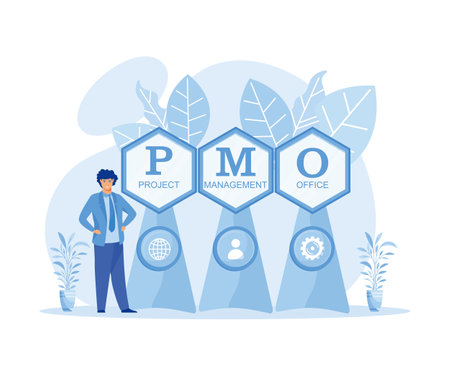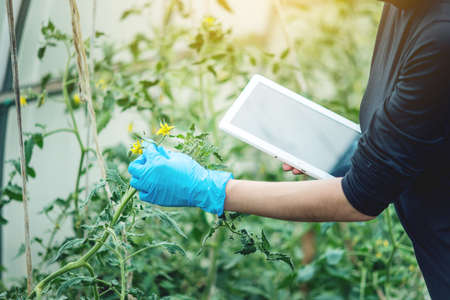Introduction to Automated Fertilizer Dispensers
In recent years, the way Americans manage their gardens, yards, and urban farms has seen a high-tech transformation. One of the most significant innovations is the automated fertilizer dispenser—a smart device designed to streamline and optimize the process of nourishing plants. These systems are quickly becoming a go-to solution in both suburban backyards and city balcony gardens, thanks to their ability to deliver precise amounts of nutrients directly to the soil with minimal effort. As more people turn to home gardening and small-scale urban agriculture, automated fertilizer dispensers are gaining popularity for their convenience, efficiency, and potential to support sustainable growing practices in spaces big and small.
2. Smart Fertilization: The Science and Tech Behind It
Smart fertilization is transforming how gardeners, urban farmers, and even home balcony growers manage soil health. At the heart of this revolution are automated fertilizer dispensers that leverage cutting-edge sensors and data analytics to deliver nutrients with pinpoint accuracy. These devices are especially popular in American cities, where maximizing limited outdoor space is crucial for green-thumbed residents.
How Automated Dispensers Work
Automated fertilizer dispensers use built-in soil sensors to monitor essential variables like moisture levels, pH balance, and nutrient content. By gathering real-time data, these smart systems can identify exactly what your plants need—no more, no less. Based on the sensor readings, the dispenser releases a calculated amount of fertilizer at optimal times, ensuring healthy plant growth without waste or runoff.
Data-Driven Precision
The science behind these devices lies in their data-driven approach. Here’s how the process typically works:
| Step | Description |
|---|---|
| Sensing | Soil sensors collect data on moisture, pH, and nutrient levels. |
| Analysis | The device analyzes the data using built-in algorithms or cloud-based platforms. |
| Dosing | Based on analysis, the system dispenses precise amounts of fertilizer as needed. |
| Feedback Loop | The device continuously monitors conditions and adjusts dosing accordingly. |
Pioneering US Tech Innovation
The United States has played a leading role in developing these technologies. From Silicon Valley startups focusing on smart gardening solutions to agri-tech companies across the Midwest refining precision agriculture tools, American ingenuity is at the forefront of making fertilization smarter and more sustainable. This tech not only helps large farms but also empowers city dwellers to turn their balconies into productive green spaces with minimal effort and maximum efficiency.

3. Benefits for Small Spaces and Urban Gardens
Automated fertilizer dispensers are quickly becoming a game-changer for urban dwellers who want to maximize their green spaces. In cities across the U.S., where outdoor space is often limited to small backyards, balconies, or even rooftop gardens, these smart systems offer targeted nutrition without the guesswork or mess of traditional methods. Their compact design means they fit seamlessly into tight corners or can be mounted along balcony railings, making them ideal for apartment living or homes with minimal yard area.
For Americans passionate about sustainability and growing their own produce, automated dispensers provide precision feeding that adapts to the unique needs of each plant—even when containers or raised beds are used instead of traditional ground plots. This efficiency not only saves time but also reduces fertilizer waste, aligning perfectly with eco-conscious values and water conservation efforts commonly seen in urban gardening communities.
As urban agriculture continues to trend from Brooklyn rooftops to Los Angeles patios, smart fertilization tools make it easier than ever for people to maintain vibrant vegetable patches, lush flower boxes, and healthy herbs—regardless of square footage. Automated systems take the guesswork out of soil management, ensuring every plant gets exactly what it needs to thrive in Americas concrete jungles.
4. Making Sustainable Choices: Environmental Impact
As urban gardeners and suburban homeowners across the United States look for ways to green their thumbs while minimizing environmental impact, smart fertilization is quickly becoming a top choice. Automated fertilizer dispensers are not just about convenience—they’re transforming how we think about sustainability in soil management. By delivering precise amounts of nutrients only when and where they are needed, these systems significantly reduce runoff into local waterways, a major concern in American cities facing water quality issues.
Reduced Runoff and Less Waste
Traditional fertilization methods often lead to excess nutrients washing away during heavy rains, which can cause algae blooms and harm aquatic ecosystems. Smart dispensers, however, use real-time data and weather forecasts to optimize application times, ensuring nutrients stay in the soil rather than ending up in rivers or lakes. This targeted approach means less fertilizer is wasted, translating into both cost savings and a lighter footprint on the environment.
How Smart Systems Support Eco-Friendly Practices
| Traditional Fertilization | Automated Dispensers |
|---|---|
| Manual application; often excessive | Data-driven, precision dosing |
| High risk of nutrient runoff | Minimized runoff with scheduled delivery |
| Inconsistent results; potential for over-fertilization | Consistent, optimized soil health |
Alignment with US Sustainability Trends
The push toward eco-friendly gardening and landscaping is strong across America, especially in metropolitan areas where space is limited and community gardens thrive on rooftops and balconies. Automated fertilizer dispensers align perfectly with this movement—helping gardeners meet local sustainability guidelines, conserve resources, and protect natural habitats. By adopting these smart solutions, individuals contribute to broader efforts like reducing pollution, conserving water, and supporting biodiversity—all key elements of today’s American sustainability agenda.
5. User Experience: Real-life Stories from American Gardeners
Across America, city dwellers and suburbanites are embracing automated fertilizer dispensers, and their stories offer a window into just how transformative these smart devices can be. For many urban gardeners, especially those working with small balconies or rooftop spaces, the promise of easy, fuss-free fertilization is a game changer. Take Jenna from Brooklyn, for example: “I used to forget to fertilize my herbs all the time. Now, my smart dispenser does it for me—even when I’m at work or traveling. My basil has never looked better!”
Suburban gardeners are seeing benefits too. Mike, who tends a vegetable patch in his Chicago backyard, appreciates the time he saves: “With two kids and a busy job, I don’t have hours to spend mixing and spreading fertilizer. The automated system keeps my tomatoes thriving without any guesswork.”
Ease of use is a common theme. Many users mention that setup is straightforward—often just connecting the dispenser to a hose or an irrigation system and using a smartphone app to set schedules. “The learning curve was super short,” says Linda from Austin. “I love getting notifications on my phone when my plants get fed.”
Perhaps most importantly, these real-life experiences highlight improved plant health. Plants receive nutrients at optimal times and in the right amounts, leading to more blooms and stronger yields. As Alex from Los Angeles sums up: “My succulents and container veggies look healthier than ever before. Plus, I waste less fertilizer because it’s all so precise.” These testimonials show that automated fertilization isn’t just about convenience—it’s about cultivating greener, more vibrant spaces even in the heart of the city.
6. Getting Started: Tips and Considerations for US Homeowners
Choosing the Right Smart Fertilizer Dispenser
Before investing in a smart fertilizer dispenser, it’s important to consider your home’s unique needs. For small-space gardening or urban balconies, look for compact models that offer precision control and compatibility with container gardens. If you have a larger backyard or raised beds, opt for systems with wider coverage and programmable features. Always check for user-friendly interfaces, mobile app integration, and compatibility with your preferred fertilizer types—whether organic, synthetic, or liquid formulations.
Installation Essentials: Making It Work for Your Space
Most automated fertilizer dispensers are designed for DIY installation. Look for plug-and-play kits that require minimal tools. For balconies or patio gardens, make sure the unit can be securely mounted or placed without obstructing walkways. In-ground systems may require more planning; pay attention to water line access and avoid disrupting existing irrigation setups. Always follow the manufacturer’s instructions closely, and consult local extension services if you need advice tailored to your climate.
Maintenance Tips: Keeping Your System Running Smoothly
Regular upkeep ensures your smart fertilization system delivers consistent results. Clean nozzles and tubing to prevent clogs, especially when using organic fertilizers that can leave residue. Check software updates if your device syncs with a smartphone app—manufacturers often release improvements to scheduling algorithms or add new climate profiles. Test sensors periodically to ensure accurate soil readings, and store spare parts like filters or connectors on hand for quick fixes.
Navigating American Climates & Local Regulations
The U.S. spans diverse climates—from humid Southeast balconies to arid Southwestern patios. Choose dispensers with adaptive scheduling that can adjust to rainfall patterns or drought conditions. Some states regulate fertilizer application to protect waterways; always review local ordinances before automating fertilization routines. Many smart systems allow you to customize application rates, helping you stay compliant while maintaining healthy plants.
Final Thoughts: Maximizing Value From Your Investment
Smart fertilizer dispensers are transforming how American homeowners manage soil health, making it easier to nurture thriving balcony gardens and urban green spaces. By choosing the right system for your environment, following proper installation and maintenance practices, and staying informed about regional requirements, you’ll enjoy lush growth while minimizing waste and effort. Welcome to the future of sustainable, hands-off gardening!


